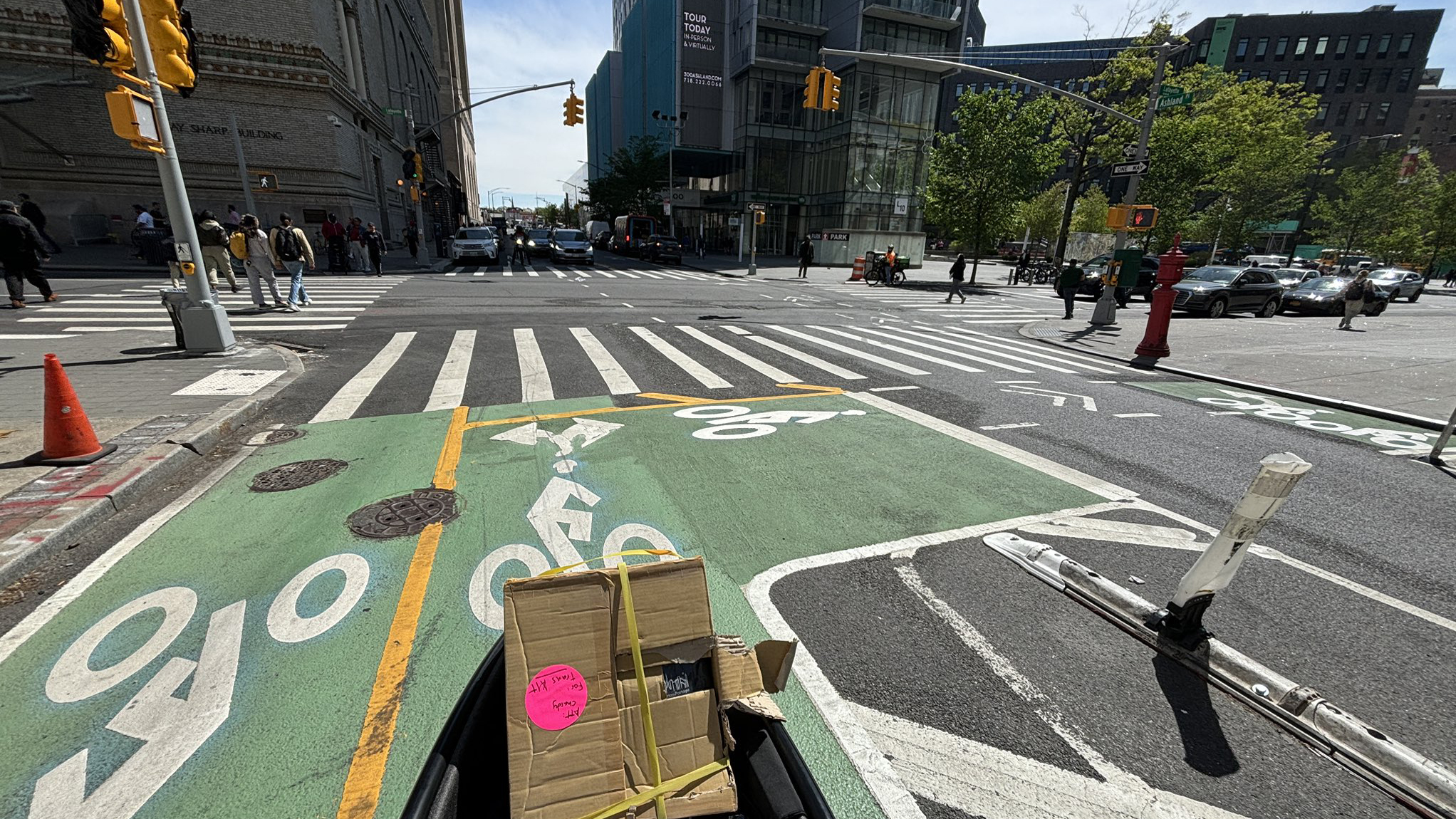THE COLON CYCLE: Art Chang Has Built Streets From The Sewer To The Pavement
12:01 AM EST on February 12, 2021
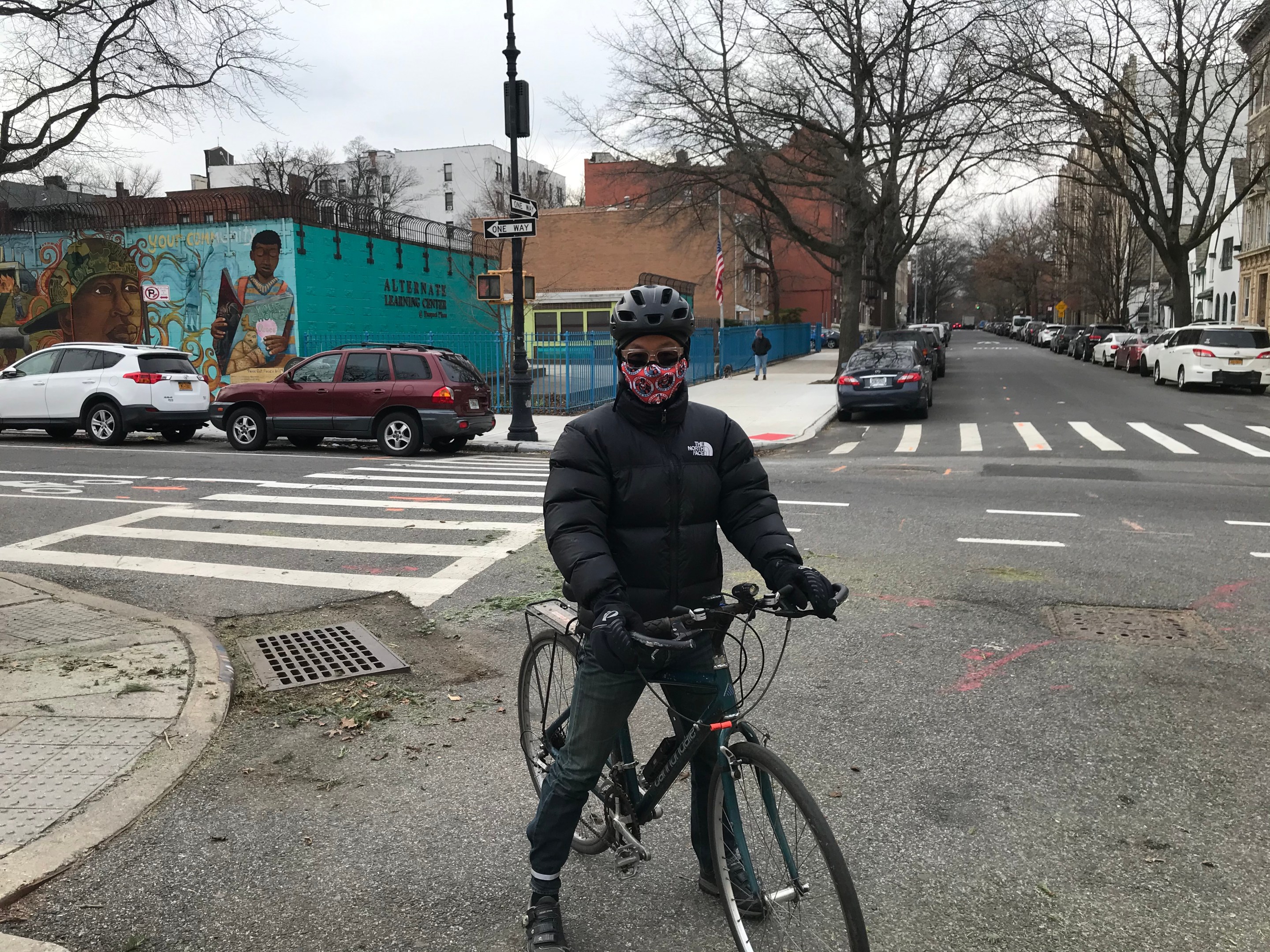
Art Chang, who wants to bring life to city streets. Photo: Dave Colon
This is the second in a series of bike rides that ace reporter Dave Colon is having with mayoral candidates (the first in the series was a ride with Council Member Carlos Menchaca). Mayoral candidates interested in taking the “Dave Colon Open Challenge” should email dcolon@streetsblog.org.
Art Chang, a tech entrepreneur and occasional public sector troubleshooter, is hardly the only candidate in the 2020 mayoral field who's a regular cyclist. But he is the only one who's ever been attacked by a raccoon while he rode his bike.
Doing laps in Prospect Park one night, Chang said he had a very unexpected run-in.
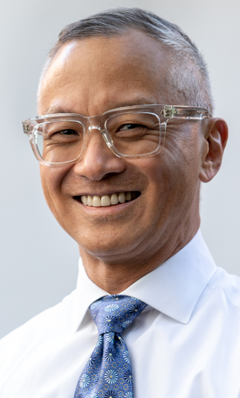
"All of a sudden, I see this streak running across the road right into the front wheels of my bike," he said. "I did an endo, I landed on my back, and the raccoon went into fighting position. I looked at it, and it looked at me, and then it ran back up into a tree."
But being mayor is about more than knowing how to deal with eager ambassadors from the Parks Department. Chang would be in charge of what to do with 6,000 miles of streetscape in the city, something with which he has real world and philosophical experience, he says.
The streets are alive
"Streets are one of the major components of open space in the city. It's where people come together, it represents community, it represents common purpose, and we forget that," Chang said on a recent ride with Streetsblog through his home neighborhood of Prospect Heights down to Red Hook. "The city has becomes rivers of traffic because the streets are car-centric. We have to think about the streets as civic spaces.
"I would love to see a more systematic review of what we do with the streets, and then plan for environmental sustainability, because what's underneath the street is also forgotten," he added. "When there's heavy rainfall, the city dumps raw sewage into the harbor, and that's because we have a combined sewer system and we have all this impermeable pavement."
Chang, whose resume includes stints digitizing the city's Campaign Finance Board's voter guide and helping build the digitized child welfare platform known as Casebook, hasn't only spent his time wandering around in the Matrix. He was also the project manager in the 1990s on the Queens West project, a sprawling rebuild of the waterfront in Long Island City. In that role, Chang says he literally learned how to build the streets, and tried to build them with safety in mind.
"I learned how to think holistically about the streets, the relationship with streets to buildings, the relationship with streets to people," Chang said about his experience in charge of the project. "We also thought a lot about, how do we calm the streetscape, and all along the waterfront we have a curving road that did that."
It can be argued that whatever Chang and the team did actually worked. Between 2016 and 2020, there were only 120 crashes and 25 injuries in the entire Queens West area.
The streets are a living thing, or at least can be in the way that Chang looks around and describes a curb.
"This is dead land, he said as he passed cars parked all along Van Brunt Street. "The streets go from the back of the curb to the back of the curb, that is what the city owns. And the back of the curb, from the house to property line, the building line, that is owned by the owner, but the city has rights to it. It creates some very interesting notions of what you might be able to do if you thought creatively about the city's ownership."
If that sounds like a call for fewer parking spots, Chang said you hard him right, but that there were still issues to work through for that.
"Then you might say, there are times when you need a car. So what can we do to incentivize really flexible car rentals? Zipcar is trash now, but something like municipal Zipcar. Maybe there's a way to get people to trade in their car for a super-discounted membership on a municipal Zipcar," he suggested.
Chang pointed to his Queens West experience in particular when asked if he thought a newcomer to city politics wouldn't maybe get eaten alive by community boards and bikelash crowds when he worked to implement something like the Streets Master Plan or the Regional Plan Association's Five Borough Bikeway plan, both of which he praised.
"So it's true, I haven't been on a community board, I haven't been in city politics, but I have spent 30 years in public service for the city. On Queens West we went through ULURP [that's the city's Uniform Land-Use Review Process], we went through the community board process, we built eight city blocks of streets from the sewers up to the street level. I bring an outside perspective coupled with insider knowledge, and I have a lot of friends who've worked with the DOT and other agencies," Chang said.
Different thinking, different outcomes
That experience could be helpful in delivering on ambitious ideas Chang brought up while riding past familiar blocks in his neighborhood.
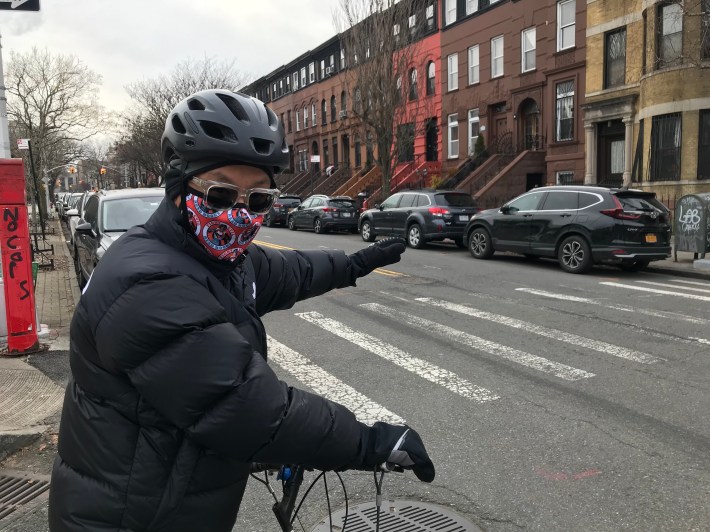
"You think about places like this corridor here, connecting Underhill [Avenue] and the park, or Sixth Avenue in Park Slope, and other super narrow streets, why don't we just convert those to primarily pedestrian use?" Chang asked.
"There's not room for two lanes of regular traffic, plus two lanes of car parking here," Chang said while stopped at the corner of Underhill Avenue and Prospect Place, an open street that saw its share of controversy during the summer. "This is a perfect candidate for a street to be converted to a primarily pedestrian use, to raise the street level up to the level of the curb, to really disincentive trucks and through traffic from going through, and having really clear protected bike lanes. Then you can have places where kids can play even during the day, which is what happens in Europe."
Chang's worldview juggles ambition with what he pitches as executive-level competence, a lane that a few candidates are trying to fill as they make the case to succeed the soaring rhetoric but sometimes spotty results of the city's 109th mayor. Depending on the situation, Chang either explained problems in transportation as a lack of hands-on management or a lack of imagination.
How would a Chang administration fix something like the incredibly narrow Ninth Street bike lane in Park Slope? That's more of the outsider thinking than the pragmatic data type.
"I look at the middle of the street, you see that big yellow stripe in the middle. This is one of those places where, why don't you put the cars back on the curb and turn the median into a two-way bike path like on Eastern Parkway? You've got space. I'd like to say I can't imagine they never thought about it, but I've been around too long. All I know is, I see this with everything, including affordable housing. People feel so stuck because the available alternatives don't add up to enough. So I say, why not increase the amount of available alternatives so we get some breathing room and creativity?"
How do you fix the city's bike parking problem? Be more pragmatic.
Chang pointed to a Citi Bike dock on Van Brunt Street. "How hard would it have been to build some bike lockups next to it? When with a friend who's on a Citi Bike, why can't you just park where they're parking?"
But there are cracks in the call for better processes, demands for things that already exist. Chang said that the city's bike parking efforts have suffered because of a lack of forward-facing metrics.
"One of the challenges with this administration is that there's so little data presented. So with bike racks, what's the target, how you gonna get there, where are you monthly or real time reports? Who's responsible, who's actually going to be the point person on this, and then does the mayor actually take the ultimate responsibility?"
The city does of course have a public-facing bike parking metric, which is how advocates were able to criticize the de Blasio administration for years at a time. The yearly number in the Mayor's Management Report never came with any other explanations around its successes or failures, which has at the very least made it difficult to answer Chang's larger questions around responsibility and mayoral involvement.
More concerning, when Chang said sometimes government has to eat crow and admit to being wrong when it comes to certain issues, he picked a curious example when asked what New York has gotten wrong in the area of street safety and bike lanes.
"I don't remember the details, but going off my recollection, the roll out of the bike lane on Prospect Park West, a lot of people in Park Slope thought that was sprung on them. I don't know if that's true or not. I know a lot of folks who felt like the heavy hand of Bloomberg was coming in and making something happen without the input of the community, that it went around the community board," Chang said.
The wealthy residents of Prospect Park West, who kept a zombie lawsuit going for years, suggested they were the will of "the community." In reality, Community Board 6 asked for the traffic calming measure, and the bike lane got plenty of support from the neighborhood and the borough.
A life cyclist
So would a Chang administration find itself getting rolled by self-styled community whisperers when it tried to to take away some parking spaces? At the very least, Chang doesn't talk like someone who wants that to happen.
"If the objective is prioritizing alternatives forms of transportation over automobiles, that's something we should implement wherever we can. And that's an objective of Mayor Chang, in every way possible. We need congestion pricing, we need to figure out how to reduce the number of cars, we need to be able to build streets so they're intended for people first and not cars first. There will always be streets that are cars first, but let's acknowledge that explicitly," Chang said.
And what he doesn't have in New York governance cred, Chang does have in life cred. Asked when he opened his third eye and saw car reliance as a social ill to be solved, Chang said attempts to lower his carbon footprint were like a second nature.
"I've always believed it. In the 1970s in Ohio when I grew up, in the wake of the Arab oil embargo, everyone was focused on how to cut out cars and go green. So recycling was really big, using less gas was really big. You had the Clean Air Act and the Clean Water Act. Everybody knew how important it was."
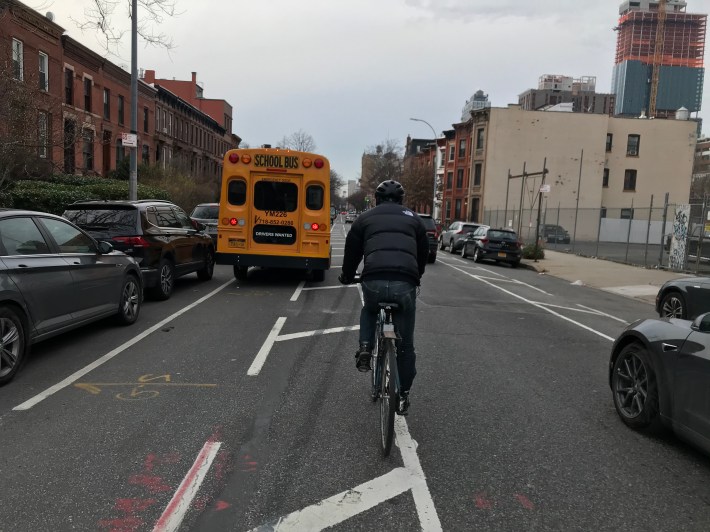
Chang rides like someone who's been cycling long enough to have been doored by a taxi passenger in 1990. He can talk, gesticulate and glide easily even around traffic, and hopped on the sidewalk for safety without a second thought after navigating under the BQE onto an industrial stretch of Smith Street. If you're a cyclist, he's very much one of you, from the way he worries about his kids when they ride to his run-ins with drivers.
"I'm personally comfortable riding in the city. But I can see how other people are not. And I know that because I have two teenage sons, and when they ride their bikes in the city, I'm terrified. I've been doored, I've fallen, I've had drivers try to hit me. They get pissed, you make a move, you get behind them and the guy flips you the bird, and you flip it back and then they use the car as a menacing weapon," Chang said about his cycling life in the city.
And the combination of that life experience, of getting doored, surviving violent drivers, building streets and fighting raccoons, is why Chang said he thinks New York should pick him in the June 22 Democratic primary and then again in November to run the show.
"This is all going to take a coalition we haven't seen before, coming together, agreeing to disagree in a civil way, figuring out what the common purpose is and working toward that. I know in all these situations that I've been able to accomplish change, it's because someone in leadership provided the kind of leadership and the courage to say, 'We need to do this thing.' I've seen it happen in my career, and i want to be the person at the top enabling things to happen."
Dave Colon is a reporter from Long Beach, a barrier island off of the coast of Long Island that you can bike to from the city. It’s a real nice ride. He’s previously been the editor of Brokelyn, a reporter at Gothamist, a freelance reporter and delivered freshly baked bread by bike. Dave is on Twitter as @davecolon. Email Dave Colon at dcolon@streetsblog.org
Stay in touch
Sign up for our free newsletter
More from Streetsblog New York City
DOT Aims to Build First Ave. Tunnel Bike Lane Before September’s UN General Assembly
DOT hopes to have the concrete-protect tunnel bike lane installed this summer, but its exact plans are still in development.
Waste Reforms Could Require Data on Crashes, Dangerous Driving
The proposal affects at least one trucking company with a deadly driving record.
When it Comes to Federal Infrastructure Grants, Size Does Matter
Cities and municipalities with larger budgets and staff are more likely to win competitive federal infrastructure grants, the Urban Institute has found.
Tuesday’s Headlines: Real Estate Greed Against Good Bike Lane Design Edition
A real estate developer's opposition to the Ashland Place protected bike lane yields some baffling bike lane markings. Plus more news.
City Considers Fixes for Another Ridiculously Slow Cross-Bronx Bus
Potential bus improvements are on the table for the Bronx's Tremont Avenue, but the Adams administration's failures on nearby Fordham Road loom large.



